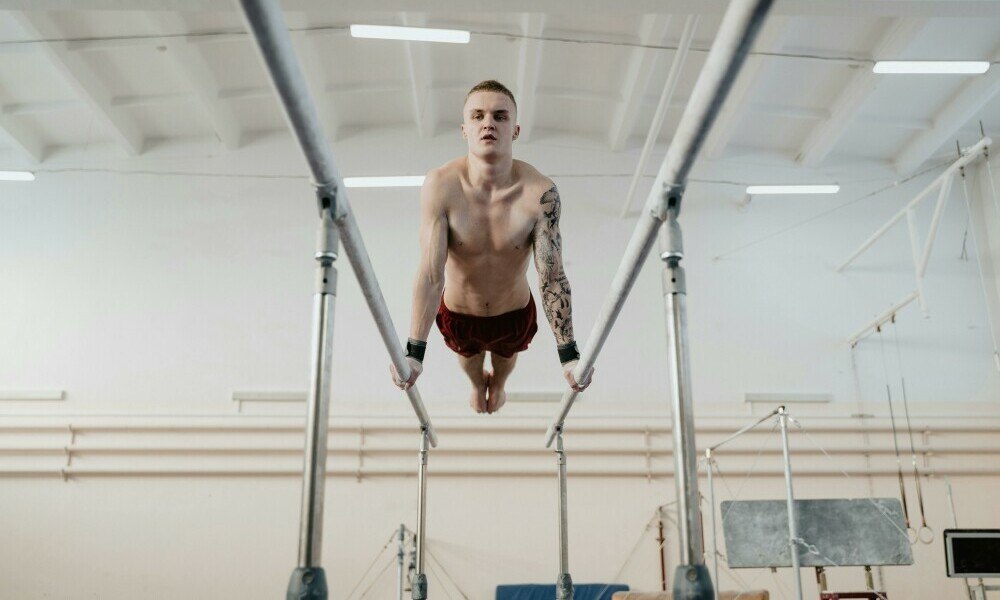Have you ever watched an acrobat effortlessly defy gravity and wondered if you could achieve even a sliver of that amazing balance?
Well, the good news is, you can!
Pilates, a popular exercise method known for its focus on core strength and flexibility, can be a fantastic way to improve your balance.

But what if you could take your Pilates practice to the next level and unlock even greater stability and control?
That’s where balance equipment comes in!
The Power of Balance in Pilates
Balance is a fundamental aspect of all Pilates exercises. It plays a crucial role in:
- Core engagement: Maintaining proper alignment and posture throughout Pilates movements relies heavily on a strong core. Balance equipment challenges your core muscles to work harder, leading to improved stability and control.
- Injury prevention: Good balance helps you navigate everyday movements with greater ease and reduces the risk of falls and injuries.
- Enhanced exercise performance: Improved balance allows for smoother and more efficient execution of Pilates exercises, maximizing the workout benefits.
Unveiling the Toolbox: Balance Equipment for Pilates
Here’s a glimpse into some of the most popular balance equipment options for Pilates, along with their unique benefits:
| Equipment Name | Description | Benefits for Pilates |
|---|---|---|
| Stability Ball | A large, inflatable ball that provides a dynamic and unstable surface. | – Core challenge and activation – Improves proprioception (body awareness) – Enhances balance and stability |
| Bosu Ball | Similar to a stability ball, but with a flat platform on one side. | – Offers more exercise variations – Combines balance and strength training – Can be used for exercises targeting different muscle groups |
| Reformer | A multi-functional machine with springs and bars that provide resistance and support. | – Ideal for controlled and targeted balance exercises – Offers a wide range of movement possibilities – Suitable for all fitness levels (with modifications) |
| Pilates Chair | Also known as the Wunda Chair, it provides a stable base for leg and core exercises. | – Improves balance and leg strength – Offers support for challenging core exercises – Can be used for a variety of Pilates exercises |
| Balance Disc | A small, inflatable cushion that can be used under your hands or feet. | – Increases instability and core activation – Perfect for adding a balance challenge to bodyweight exercises – Easy to store and use at home |
| Foam Roller | While not strictly balance equipment, foam rolling improves flexibility and body awareness. | – Enhanced range of motion for better balance – Helps release muscle tension and improve proprioception |
Mastering the Moves: Exercises with Balance Equipment
Before diving into exercises, remember to prioritize proper form and safety when using balance equipment. Here are a few examples to get you started:
- Pilates Bridge on Stability Ball: Lie on your back with your knees bent and feet flat on the ball. Lift your hips off the ground, engaging your core and glutes. Hold for a few seconds, then slowly return to the starting position.
- Plank on Bosu Ball: Place your forearms on the flat platform of the Bosu ball and your toes on the floor. Engage your core and glutes to maintain a straight line with your body. Hold for as long as you can comfortably maintain good form.
- Leg Extensions on Reformer: Secure yourself on the reformer with straps around your ankles. Extend one leg against the resistance of the springs, keeping your core engaged and your back straight. Repeat with the other leg.
Get some ideas from the video.
Unlocking Your Potential: Benefits of Using Balance Equipment
By incorporating balance equipment into your Pilates routine, you can reap a multitude of benefits:
- Improved balance and stability: This translates to better coordination and confidence in everyday activities.
- Increased core strength and engagement: Balance equipment challenges your core muscles to work harder, leading to a stronger and more stable core.
- Enhanced proprioception: Balance equipment exercises heighten your body awareness, allowing for more controlled and precise movements.
- More challenging and dynamic Pilates workout: Balance equipment adds a fun and dynamic element to your Pilates routine, keeping you engaged and motivated.
- Fun and engaging way to exercise: Balance equipment can make your Pilates practice more enjoyable and less monotonous.
FAQs (Frequently Asked Questions)
Q: Is balance equipment necessary for Pilates?
A: No, balance equipment is not essential for Pilates. However, it can significantly enhance your workouts by adding a challenge and targeting specific areas like core strength and balance.
Q: What if I don’t have access to specific equipment?
A: Don’t worry! Many Pilates exercises can be modified to be done without equipment. You can use bodyweight exercises or household items for similar benefits.
Q: How often should I use balance equipment in my Pilates routine?
A: It depends on your fitness level and experience. Beginners can start by incorporating balance equipment one to two times per week, gradually increasing as they progress. Listen to your body and don’t hesitate to modify exercises if needed.
Conclusion
Pilates is a fantastic way to improve your overall fitness, and incorporating balance equipment can take your practice to the next level. By challenging your core, enhancing your balance, and adding a fun twist to your routine, balance equipment can unlock your inner acrobat and help you achieve amazing results.
Ready to explore the world of balance equipment? Here at Reliable Home Fitness, we offer a wide variety of equipment options to suit your needs and budget. Check out our selection of stability balls, Bosu balls, reformers, and more on our website!
P.S. Don’t forget to share this article with your friends who are interested in improving their balance and taking their Pilates practice to the next level!
